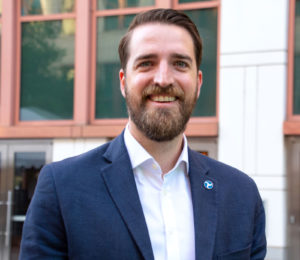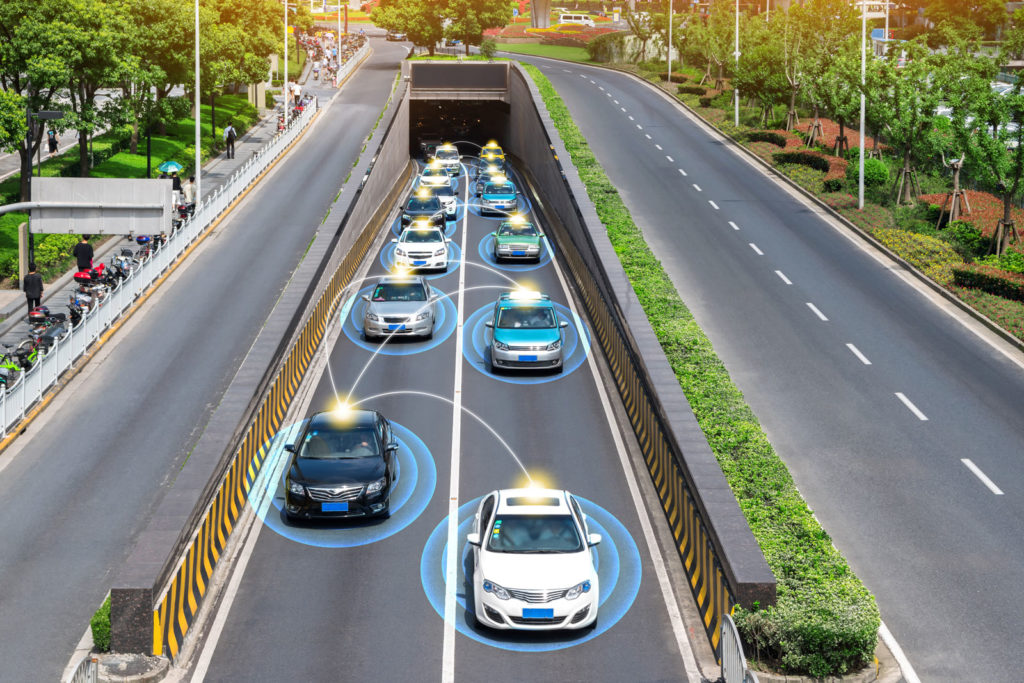Ta ylor Lochrane introduces the FHWA’s CARMA platform, which enables V2X communication for the research and development of cooperative driving automation, in advance of his presentation at the Autonomous Vehicle Test & Development Symposium.
ylor Lochrane introduces the FHWA’s CARMA platform, which enables V2X communication for the research and development of cooperative driving automation, in advance of his presentation at the Autonomous Vehicle Test & Development Symposium.
Dr Taylor Lochrane is the technical program manager for the USDOT Federal Highway Administration (FHWA). He leads and manages the CARMA program, part of the USDOT’s effort advancing research and development to accelerate market readiness and deployment of Cooperative Driving Automation (CDA).
What will you be speaking about at the conference?
I will be talking about CARMA, which is the Federal Highway Administration’s premier research initiative that is leading innovation in cooperative driving automation. It addresses how automated vehicles can work together with each other and with roadway infrastructure to support safe and efficient driving.
What are the main features and benefits of CARMA?
The AV industry claims increased benefits in safety and efficiency through automation. Even higher orders of safety and efficiency may be gained through cooperation – an area with minimal existing research. CARMA is tackling this challenge.
It introduces collaboration through open-source AV technology to enable the participation and engagement of a larger community in cooperative driving automation. CARMA’s tools are developed to accelerate innovation and lead to the commercialization of new features and products that benefit the safe and efficient movement of people, goods and services.
Who is CARMA for?
CARMA is for everyone who has a vision and drives to innovate and modernize our transportation system. CARMA is an open-source community for inventors and innovators collaborating on new solutions with emerging technology to address cooperative driving automation.
As an open-source software platform, CARMA is designed to take input from all stakeholders interested in furthering cooperative driving automation. With the goal of proving the concepts and benefits behind cooperative driving automation, it is important to understand stakeholder insights from all levels and segments of the industry.
What is next for this technology?
We are at the forefront of a potentially transformative era for surface transportation. Automation will unlock many new business models and commercial opportunities that are unimaginable today. As part of our efforts to prepare for the future, we are re-examining the fundamentals behind driving and our roadway infrastructure. I have been researching cooperative automation and CARMA for the last seven years, and my view is that there is so much opportunity in this space that it is just the beginning of this journey. We have to do this together – we have to collaborate.
How is it being developed further? What are your hopes for it in terms of adoption?
Across the country, we have a growing community of development partners committed to CARMA development – today, these are mostly academic institutions. We want to further expand this community to even more contributors – more academic researchers, automotive OEM partners, technology startups, mapping companies, etc. Basically, we want anyone who has an interest in automated vehicles and the future of transportation to be a part of this project.
The FHWA’s primary focus is to support the safe and efficient deployment of automated vehicles. CARMA is a research initiative today and we hope it can lead to good methodologies and products benefiting the public.
 Catch Taylor’s presentation titled ‘Automated vehicles working together with CARMA3’ at the Autonomous Vehicle Test & Development Symposium. For the up-to-date program, click here. To book your delegate pass, click here.
Catch Taylor’s presentation titled ‘Automated vehicles working together with CARMA3’ at the Autonomous Vehicle Test & Development Symposium. For the up-to-date program, click here. To book your delegate pass, click here.


